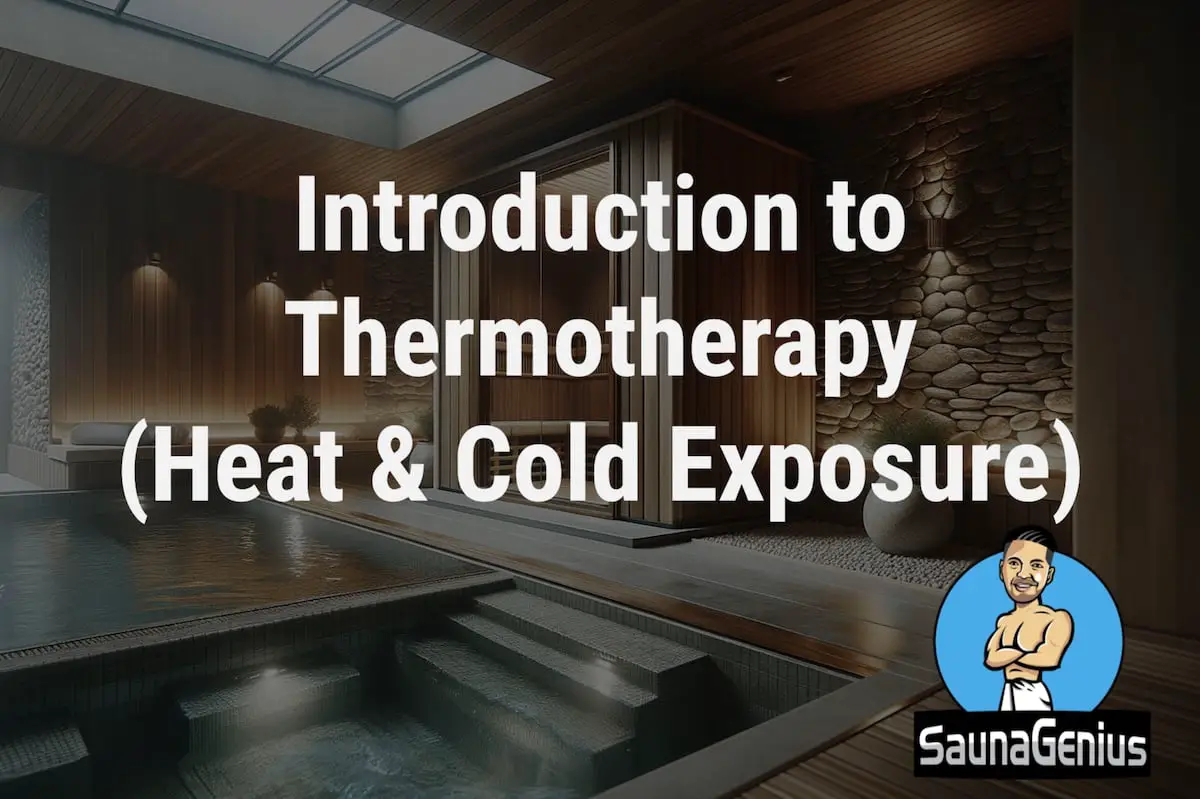Thermotherapy, involving both heat and cold treatments, plays a significant role in enhancing health and well-being. This approach leverages the benefits of both sauna (heat exposure) and cold plunge (cold exposure) to optimize metabolic health, mental resilience, and overall physical performance.
Thermotherapy and cryotherapy are therapeutic interventions that leverage the effects of heat and cold, respectively, to alter the temperature of the skin, joints, and soft tissues. This alteration aims to improve the symptoms associated with various conditions, particularly musculoskeletal and soft tissue injuries. The primary goal is to modulate pain, tissue metabolism, blood flow, inflammation, edema, and the extensibility of connective tissues through these temperature changes.
Key Takeaways:
- Thermotherapy and cryotherapy use heat and cold to improve health, targeting skin, joints, and soft tissues to alleviate various conditions.
- Cold exposure boosts metabolic rate, enhances blood lipid and insulin profiles, and improves mental resilience.
- Heat exposure through sauna use increases blood circulation, activates heat shock proteins, and improves sleep quality.
- A combination of cold and heat therapies, known as contrast therapy, maximizes metabolic benefits and supports fat loss.
The Science of Brown Fat
Brown fat is a type of body fat that is activated when you get cold.
It burns calories to generate heat and improve body temperature regulation. Unlike white fat, brown fat is rich in mitochondria, making it a key player in metabolic health. Research shows that cold exposure can increase brown fat density, leading to improved tolerance to cold, enhanced metabolic rate, and better management of blood lipids and insulin levels.
Benefits of Cold Exposure (Cryotherapy)
Cryotherapy, or cold exposure, is essential for reducing inflammation and numbing sore tissues, thereby decreasing pain in joints and muscles. By applying cold to the affected areas, cryotherapy effectively slows down blood flow, reducing swelling and tissue damage.
Cold exposure, even for just 11 minutes a week, can significantly enhance brown fat function, resulting in numerous health benefits:
- Increased Metabolic Rate: Boosts core resting metabolism.
- Improved Blood Lipid and Insulin Profiles: Enhances the body’s ability to manage these crucial health markers.
- Mental Resilience: Exposure to cold can improve mental toughness and clarity due to the significant dopamine release.
Implementing Cold Exposure
Cold exposure doesn’t require extreme conditions; being uncomfortably cold is enough. It can be achieved through various methods such as cold showers, ice baths, or natural water bodies. The key is consistency and safety, ensuring the cold exposure is both effective and manageable.
The Role of Heat Exposure in Thermotherapy
Heat exposure, or thermotherapy, involves the application of heat to affected areas, enhancing blood circulation and muscle relaxation. Both a sauna and a hot tub are great options for heat exposure.
This increased blood flow brings nutrients and oxygen to injured tissues, promoting healing and reducing stiffness. Heat therapy can significantly improve the extensibility of connective tissues, making it invaluable in rehabilitation settings or for at-home care.
Heat exposure, particularly through sauna use, offers its own set of benefits:
- Enhanced Blood Circulation: Heat causes vasodilation, improving blood flow throughout the body.
- Increased Sweating Efficiency: Learning to offload heat through sweating can improve heat tolerance and detoxification.
- Activation of Heat Shock Proteins: These proteins help in cellular repair and protection against stress.
- Improved Sleep: The cooling effect post-sauna can aid in sleep quality by facilitating the body’s natural temperature drop needed for sleep.
Sauna Use Recommendations
For optimal health benefits, a weekly sauna exposure of approximately 57 minutes is recommended. This can be divided into sessions with breaks to cool down, ensuring safety and maximizing the hormonal benefits, including growth hormone release, essential for tissue repair and metabolism.
Combining Cold and Heat Therapies

Contrast therapy, alternating between cold and heat exposures, can maximize the metabolic benefits.
Ending these sessions with cold exposure is particularly effective for fat loss and metabolic increase as it forces the body to heat up using its own mechanisms, increasing metabolic demand.
Incorporating Thermotherapy and Cryotherapy in Rehabilitation
Both thermotherapy and cryotherapy can be seamlessly integrated into rehabilitation programs or used independently at home to manage the symptoms of musculoskeletal injuries.
By understanding the specific benefits and mechanisms of each treatment, individuals can effectively utilize heat and cold therapies to accelerate recovery and improve overall well-being.
Practical Tips for At-Home Thermotherapy
- Cold Baths and Showers: Start with cold water exposure, followed by a hot shower, to prime the metabolism.
- Sauna Sessions: Aim for an hour of sauna use per week, divided as per convenience, to enhance growth hormone levels and achieve the thermal benefits.
Conclusion on Thermotherapy
Integrating both cold and heat exposures into a weekly routine offers a holistic approach to improving metabolic health, enhancing mental resilience, and boosting physical performance.
By understanding and applying these principles safely and consistently, individuals can experience significant health benefits.

